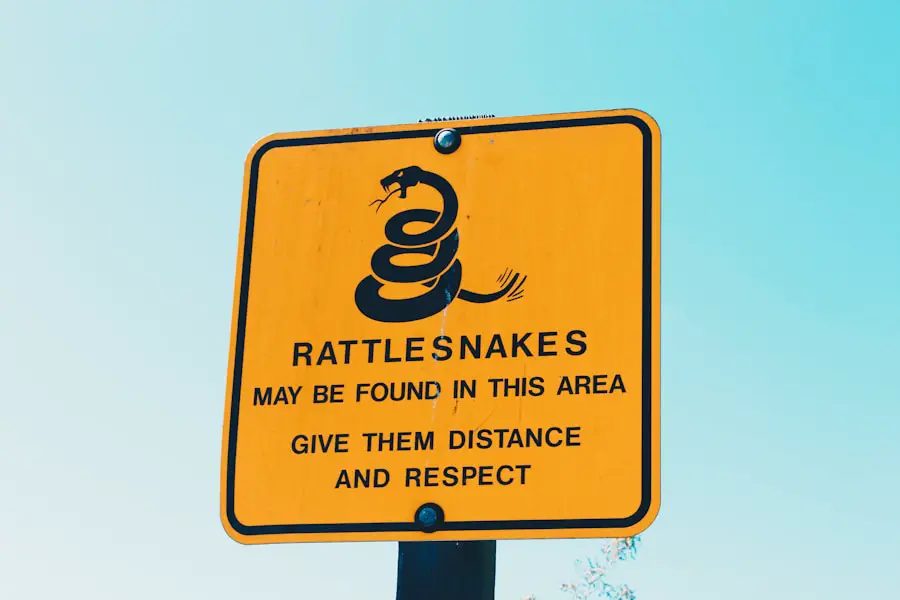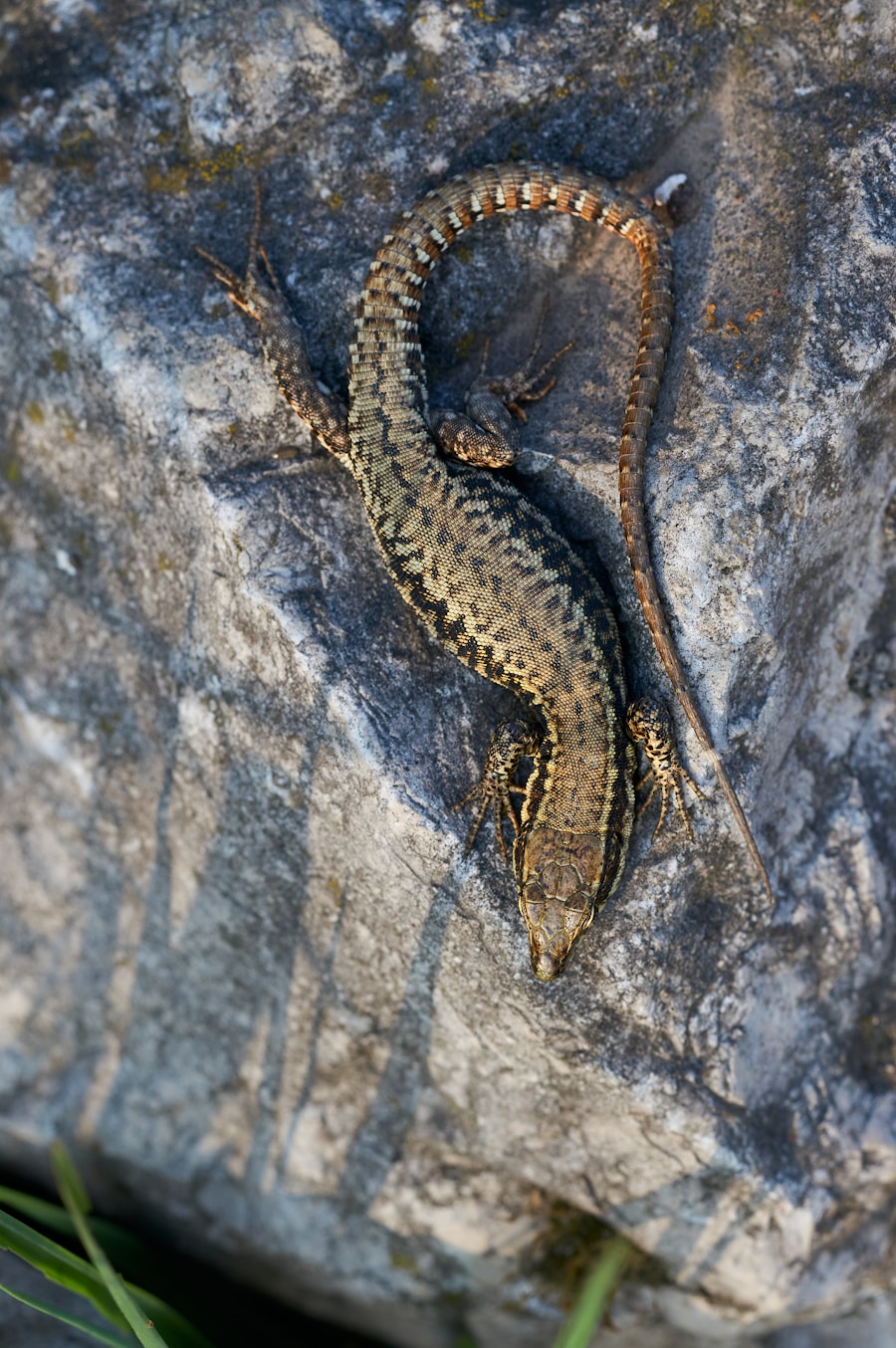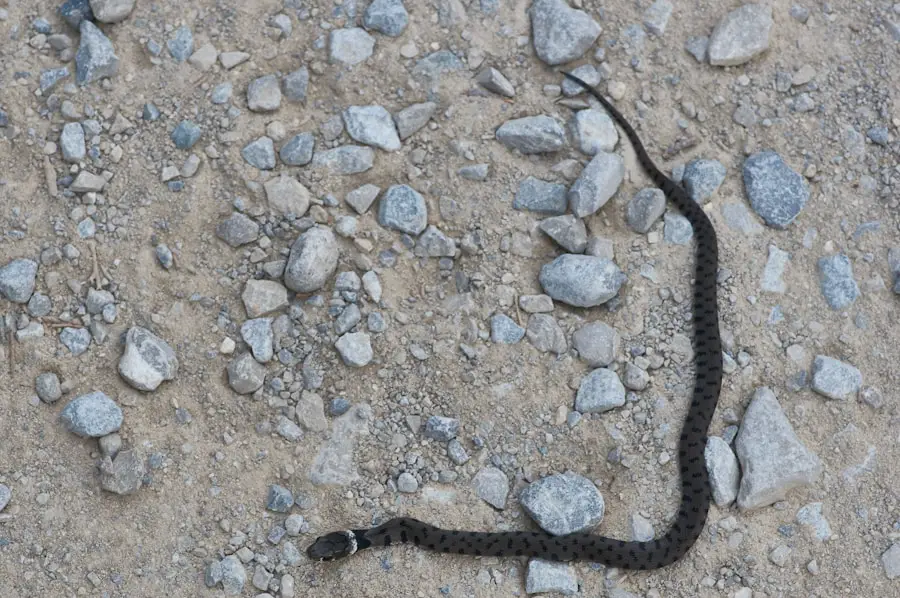Rattlesnakes, belonging to the family Viperidae, exhibit a range of fascinating behaviors that are crucial for their survival. These reptiles are primarily crepuscular, meaning they are most active during the twilight hours of dawn and dusk. This behavior is not merely a quirk; it allows them to hunt effectively while avoiding the extreme heat of midday, which can lead to dehydration and increased vulnerability to predators.
During these active periods, rattlesnakes utilize their keen sense of smell, facilitated by their forked tongues, to detect prey such as small mammals, birds, and lizards. Their hunting strategy often involves ambush; they remain motionless, camouflaged within their environment, waiting for unsuspecting prey to come within striking distance. In addition to their hunting habits, rattlesnakes exhibit complex social behaviors, particularly during the mating season.
Males engage in combat rituals where they coil around each other and attempt to push their opponent down. This display of strength is not only a means of establishing dominance but also a way to attract females. Interestingly, rattlesnakes are known to communicate through body language and vibrations.
When threatened, they may rattle their tails as a warning signal, a behavior that serves both to deter potential threats and to alert other rattlesnakes in the vicinity. Understanding these behaviors is essential for anyone who ventures into rattlesnake territory, as it provides insight into how to coexist safely with these remarkable creatures.
Key Takeaways
- Rattlesnakes are generally shy and will only strike if they feel threatened or cornered.
- Rattlesnakes are commonly found in rocky areas, grasslands, and deserts, and they prefer to hide in areas with plenty of cover.
- Before hiking in rattlesnake territory, wear long pants and closed-toe shoes, and avoid tall grass and rocky areas.
- If you encounter a rattlesnake, slowly back away and give it plenty of space to retreat.
- If bitten by a rattlesnake, seek immediate medical attention and keep the affected area immobilized and at or below heart level.
Identifying Rattlesnake Habitat
Habitat Preferences
Each species has its preferred environment; for instance, the Western Diamondback Rattlesnake is often associated with arid regions and scrublands, while the Timber Rattlesnake prefers deciduous forests and mountainous areas.
Recognizing Rattlesnake Habitats
Recognizing these habitats is vital for hikers and outdoor enthusiasts who wish to avoid encounters with these snakes. In addition to understanding the types of environments rattlesnakes inhabit, it is important to recognize the specific features of their habitats. Rattlesnakes often seek shelter in crevices, under rocks, or within dense vegetation where they can remain hidden from both predators and prey. They are also drawn to areas with abundant food sources and suitable basking spots where they can regulate their body temperature.
Avoiding Encounters
When hiking in areas known for rattlesnake populations, it is prudent to stay on established trails and avoid tall grass or brush where snakes may be resting. By being aware of their preferred habitats and behaviors, individuals can significantly reduce the likelihood of an encounter.
Precautionary Measures Before Hiking

Before embarking on a hiking adventure in rattlesnake territory, it is essential to take several precautionary measures to ensure safety. First and foremost, proper footwear is crucial; sturdy hiking boots that cover the ankles provide an added layer of protection against potential bites. Additionally, wearing long pants can help shield the legs from accidental encounters with snakes hidden in underbrush or tall grass.
It is advisable to choose light-colored clothing that makes it easier to spot snakes in the environment. Another important measure is to educate oneself about rattlesnake behavior and habitat. Familiarizing oneself with the specific species that inhabit the area can provide valuable insights into their habits and tendencies.
Carrying a walking stick can also be beneficial; not only does it provide stability on uneven terrain, but it can also be used to gently prod the ground ahead when walking through areas where visibility is limited. This practice can help alert any nearby snakes to human presence before an accidental encounter occurs. Furthermore, hiking in groups rather than alone can enhance safety; there is strength in numbers, and having companions can provide assistance in case of an emergency.
What to Do When Encountering a Rattlesnake
| Actions | Response |
|---|---|
| Stay Calm | Remain calm and slowly back away from the snake. |
| Keep Distance | Keep a safe distance of at least 6 feet from the snake. |
| Avoid Sudden Movements | Avoid making sudden movements or loud noises that may startle the snake. |
| Do Not Attempt to Capture or Kill | Do not attempt to capture or kill the snake, as this may increase the risk of a bite. |
| Seek Medical Attention | If bitten, seek immediate medical attention and call for help. |
Encountering a rattlesnake in the wild can be a startling experience, but knowing how to react can make all the difference. The first step is to remain calm; panicking can lead to hasty decisions that may increase the risk of a bite. It is crucial to give the snake space and avoid any sudden movements that could provoke it.
Rattlesnakes typically prefer to avoid confrontation and will often retreat if given the opportunity. If you find yourself close to a rattlesnake, slowly back away while keeping your eyes on the snake without making direct eye contact. If you are hiking with others, communicate your presence clearly so that everyone remains aware of the snake’s location.
It is important not to attempt to handle or provoke the snake for any reason; this includes trying to take photographs up close or attempting to move it off the trail. Instead, allow the snake time to move away on its own accord. If the snake does not leave the area after a reasonable amount of time, consider taking an alternate route or waiting until it has moved on before proceeding.
Understanding that rattlesnakes are an integral part of their ecosystem can help foster respect for these creatures and promote safe coexistence.
First Aid for Rattlesnake Bites
In the unfortunate event of a rattlesnake bite, immediate first aid is critical while waiting for professional medical assistance. The first step is to remain as calm as possible; anxiety can exacerbate symptoms by increasing heart rate and spreading venom more quickly through the bloodstream. It is essential to keep the affected limb immobilized and at or below heart level to minimize venom circulation.
Avoid using a tourniquet or cutting into the wound, as these methods can cause more harm than good. Removing any tight clothing or jewelry near the bite site is also important, as swelling may occur rapidly following envenomation. If possible, take note of the snake’s color and markings; this information can assist medical professionals in determining the appropriate antivenom treatment.
It is crucial not to consume alcohol or caffeine, as these substances can further complicate the body’s response to venom. Instead, focus on staying still and calm until help arrives.
Seeking Professional Help

After administering first aid for a rattlesnake bite, seeking professional medical help should be your next priority. It is vital to get to a hospital or medical facility as quickly as possible, as antivenom treatment may be necessary depending on the severity of the bite and the amount of venom injected. If you are in a remote area without immediate access to medical facilities, call emergency services or have someone transport you to safety while keeping your condition stable.
When you arrive at a medical facility, be prepared to provide detailed information about the incident, including when and where it occurred and any symptoms you are experiencing. Medical professionals will assess your condition and may perform tests such as blood work or imaging studies to evaluate tissue damage caused by venom. Timely intervention is crucial; untreated rattlesnake bites can lead to serious complications such as necrosis or systemic reactions that may threaten life.
Reporting Rattlesnake Sightings
Reporting rattlesnake sightings contributes significantly to public safety and wildlife management efforts. Many regions have established protocols for documenting snake encounters, which can help local authorities monitor populations and assess potential risks in popular hiking areas. If you encounter a rattlesnake while hiking or in your backyard, consider notifying local wildlife agencies or park services about your sighting.
Providing specific details about the location and behavior of the snake can assist wildlife officials in understanding its habits and movements within that area. This information may lead to increased awareness campaigns or educational programs aimed at informing the public about rattlesnake safety practices. Additionally, some organizations may track rattlesnake populations for conservation purposes; your report could contribute valuable data regarding their distribution and habitat preferences.
Rattlesnake Safety Tips
To ensure safety while enjoying outdoor activities in rattlesnake territory, several practical tips can be followed. First, always stay on marked trails when hiking; this minimizes the risk of encountering snakes hidden in tall grass or underbrush. Additionally, avoid hiking during peak rattlesnake activity times—early morning and late afternoon—when they are most likely to be out hunting or basking in the sun.
When traversing rocky areas or climbing over logs, exercise caution by checking your surroundings carefully before placing your hands or feet down. Using trekking poles can help probe ahead for hidden snakes while providing stability on uneven terrain. If you are camping in rattlesnake-prone areas, set up your tent away from dense vegetation and avoid leaving food scraps around that might attract rodents—rattlesnakes follow their prey.
Lastly, educate yourself about local rattlesnake species and their behaviors through reputable resources or local wildlife organizations. Understanding how these snakes interact with their environment will enhance your ability to navigate safely through their habitats while fostering respect for these remarkable reptiles that play an essential role in maintaining ecological balance.
If you are hiking and come across a rattlesnake, it is important to remain calm and slowly back away from the snake. It is crucial to give the snake plenty of space and not try to provoke it in any way. For more tips on how to handle encounters with wildlife while hiking, check out this informative article on what to do if you see a rattlesnake while hiking.
FAQs
What should I do if I see a rattlesnake while hiking?
If you encounter a rattlesnake while hiking, the best thing to do is to slowly back away from the snake and give it plenty of space. Do not try to approach, provoke, or handle the snake.
How far away should I stay from a rattlesnake?
It is recommended to stay at least 6 feet away from a rattlesnake if you encounter one while hiking. Give the snake plenty of space to move away on its own.
Should I try to kill the rattlesnake if I see one while hiking?
No, it is not recommended to try to kill a rattlesnake if you encounter one while hiking. It is best to slowly back away and leave the snake alone.
What should I do if I get bitten by a rattlesnake while hiking?
If you are bitten by a rattlesnake while hiking, it is important to seek medical attention immediately. Try to remain as calm and still as possible to slow the spread of venom, and call for help as soon as possible.
How can I avoid encountering rattlesnakes while hiking?
To avoid encountering rattlesnakes while hiking, it is recommended to stay on designated trails, watch where you step, and be aware of your surroundings. Avoid tall grass, rocky areas, and areas with dense underbrush where snakes may be hiding.
